One of my best Christmas gifts this last year was a gift certificate to
Oak Hill Gardens. I made up a list of the orchids I wanted to order, but waited until the weather was reasonably frost-free before ordering them. Two weeks ago, it was quite warm here in central Oklahoma and I had to leave my greenhouse door open to keep the temperature below 100 F. Of course, as soon as I placed my order for the orchids, a cold front moved through and sent the overnight lows near freezing again. Thankfully my orchids got here safe and sound.
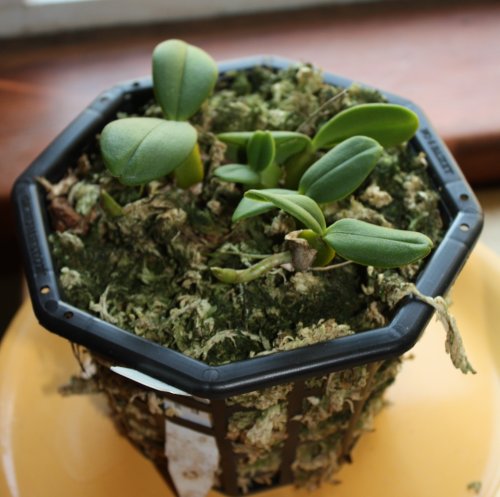 |
| Bulbophyllum scaberulum |
I used my “
Field Guide to Ethiopian Orchids” (also a Christmas gift) to cross-reference the plants available from Oak Hill Gardens and found a couple of neat Ethiopian orchids to purchase. One is
Bulbophyllum scaberulum, which came in a 6” basket (pictured above). This is a really neat orchid, whose pseudobulbs form along a creeping root. The blooms of this plant are very strange. There is a tall maroon-purple bract that is quite thick that more-or-less covers and obscures the little red, yellow and white flowers, which later peek out of the scabbard. I think the species name scaberulum refers to something else (not scabbard), but it seems appropriate for the blooming bract, too. You can see a picture of a blooming plant
here.
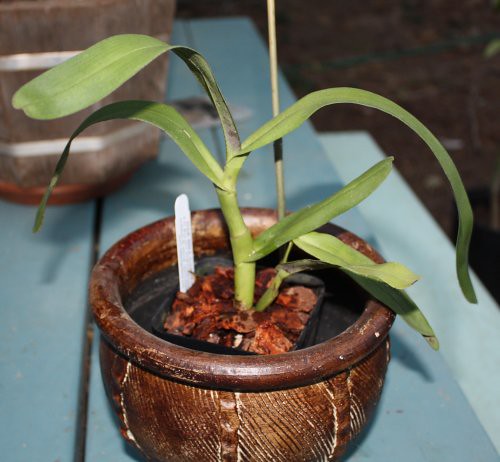 |
| Polystachya paniculata |
The other Ethiopian orchid that I ordered is
Polystachya paniculata (above). This one has a post impressive blooming bract, which is paniculate, which is to say that it has a branched blooming bract (not just a single straight stem) with lots of blooms. It’s like an upwards pointing chandelier of blooms. You can see a picture of a blooming plant
here.
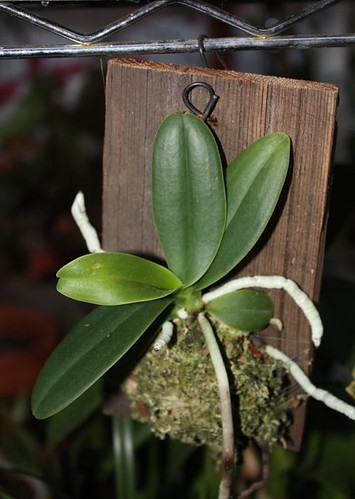 |
| Sedirea japonica |
This mounted orchid (above) is
Sedirea japonica. I had admired the blooms of this plant before when I had thumbed through the Oak Hill Gardens catalog, but then I recently read about it in “Bizarre Botanicals,” and it is apparently one of the best smelling (sweet) plants on the planet. I don’t typically collect plants for their scent, but combining the fragrance with the cool flowers, it makes for a very interesting plant. The blooms hang beneath the plant, like those of Gongora or Stanhopea, so it is mounted to allow the blooms to fall from the plant freely. They are creamy white in color with bands of purple on the lower petals and pink splashed on the tongue. You can see a picture of a blooming plant
here.
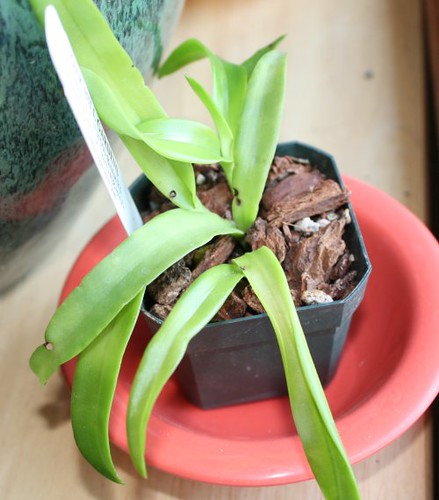 |
| Dendrobium stratiotes |
I have several
Dendrobiums in my orchid collection and so I feel pretty good about my ability to grow them. I added one more with
Dendrobium stratiotes (above). This Dendro has a super-cool bloom, with petals that spiral upwards like ram’s horns. Check out the picture of a blooming plant
here.
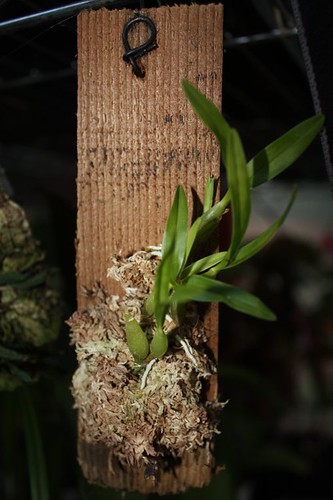 |
| Encyclia polybulbon |
My last little orchid is
Encyclia polybulbon, which is also a mounted plant (above). This plant will produce really neat looking flowers that are kind of burnt-yellow stars with a white lip. You can see a picture of a blooming plant
here. This is actually the second
Encyclia in my collection. The other one I added a month or two back, but haven’t posted on my blog yet because I was hoping to get a bloom soon and show pictures. If I don’t get something soon, I’ll just go ahead and post pictures of the plant as-is. First, I am going to try moving my plant into some brighter light to see if that encourages a bloom stalk.
How do you like my new orchids?





Absolutely Beautiful. The mounted plants are interesting, I wonder if a certain type of wood is used for the mounting board...
ReplyDeleteOh, how exciting! I will be waiting to see your photos of them blooming.
ReplyDeleteVery nice orchids! Do you water the one without a pot...on the post...very often?
ReplyDeleteJenny - sometimes orchids are mounted on cork. This is a nice material because the roots can attach easily and even penetrate the cork. It is also absorbent when you place it in water. My cucumber orchid is mounted on cork, but these are not. If you are mounting an orchid on something other than cork, you really need to have sphagnum moss attached - something that will absorb water and retain it for a little while and keep the roots moist when the plant is watered.
ReplyDeleteSage Butterfly - to water this mounted orchids, I submerge them in water and make sure the sphagnum moss gets nice and wet. I have to do this pretty often when it is as dry outside as it has been here lately. Basically, if the sphagnum moss is soft to the touch, it's okay. If it is crunchy, it needs a dip.